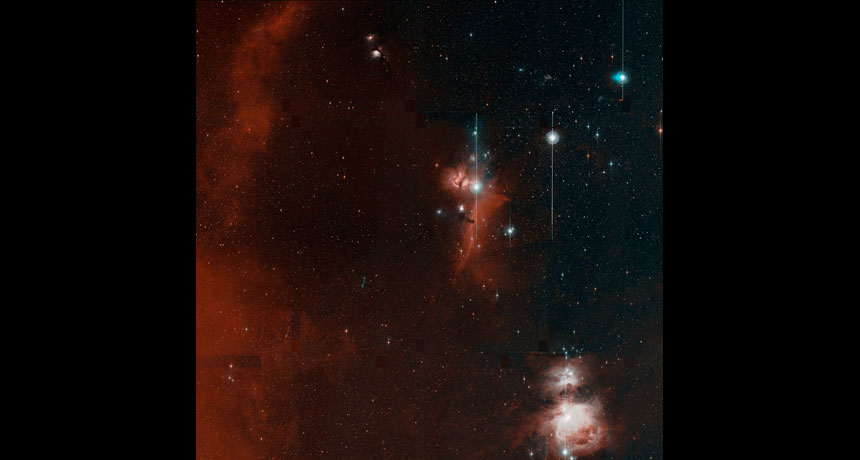New camera on Palomar telescope will seek out supernovas, asteroids and more

LOOK AROUND The new Zwicky Transient Facility took this image — its first — on November 1. The three bright stars at the upper right are the belt of the constellation Orion, and the Orion nebula is at the lower right. The full resolution version of the image is more than 24,000 pixels on a side.
Caltech Optical Observatories







